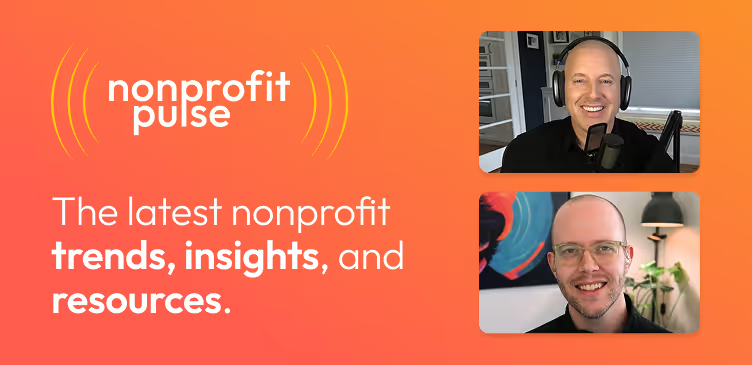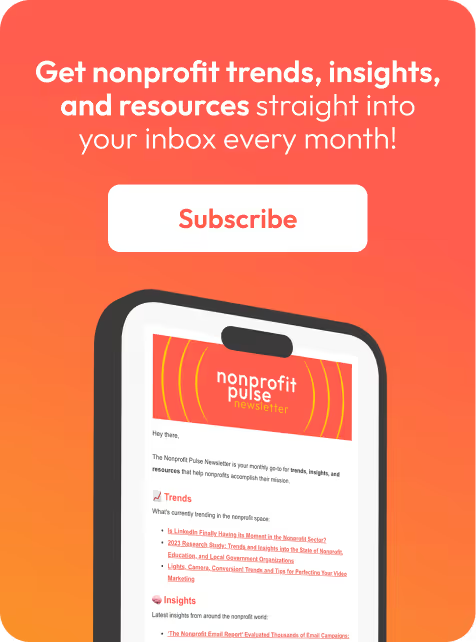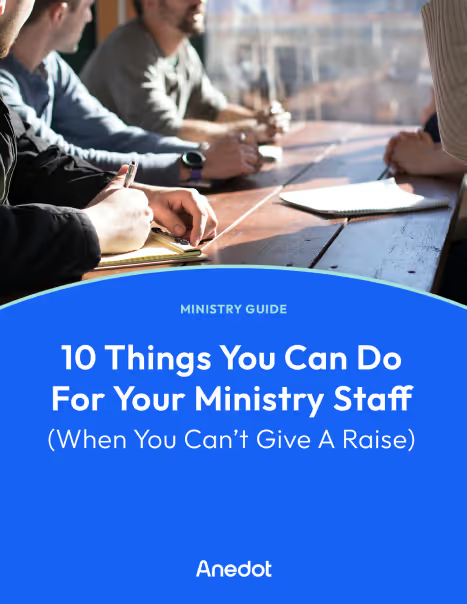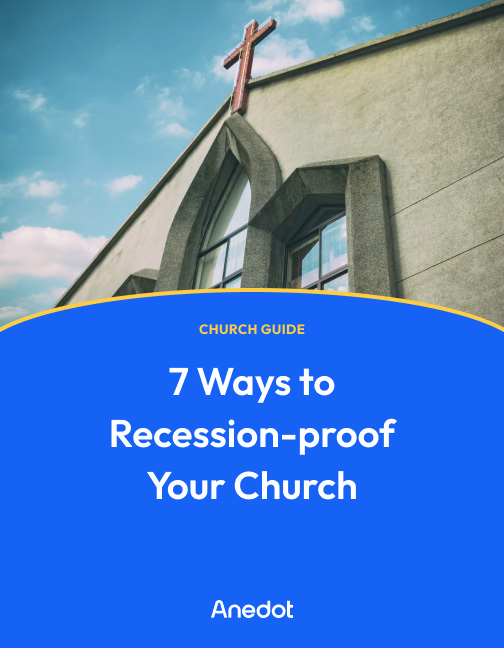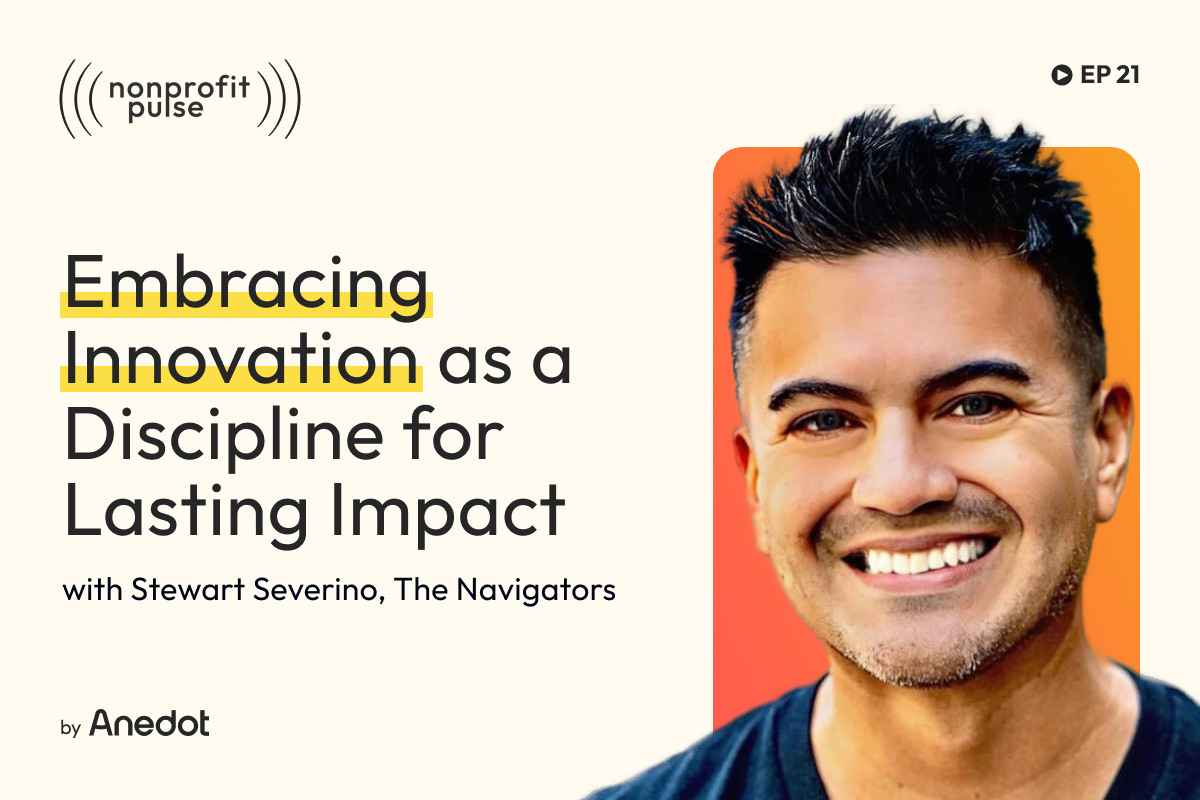Podcast episode transcript ↓
Josh:
Welcome to Big Ideas For Every Org. We help leaders discover powerful, big ideas that increase organizational impact.
I'm Josh, and today we're joined by Ted Vaughn.
Ted is the co-founder of Historic Agency, and co-author of the book Culture Built My Brand, The Secret to Winning More Customers Through Company Culture.
Ted has helped nonprofits, ministries and businesses navigate brand, marketing and communications for more than 25 years.
Today we’re talking about how your organization’s culture is either building your brand or eating it alive.
We have all seen great brands that are the product of incredible culture, names like Southwest Airlines and Chick-Fil-A come to mind.
But what if your organization could have the same brand building culture and success?
Today, we’re going to unpack that.
Ted, thanks for joining us.
Ted:
Grateful to be here, and your voice, reading that intro is probably the smoothest, coolest thing I've had happen all week.
So thank you.
Thank you for that.
Josh:
Hey, yeah. Welcome. Welcome.
So, before we jump into the topic today, hey, just tell us a bit about yourself and your organization.
Ted:
Yeah. I have spent my entire career in the non-profit space, primarily faith-based nonprofit.
So I understand that animal, which I think is a very unique animal, pretty well.
Started kind of in the arts, and then moved into more executive leadership.
And now, for the last 11 years have been full-time coaching consulting, through an organization called Historic Agency, which is a brand, strategy, design, and culture consultancy.
We work with primarily parachurch, but then other nonprofit sectors in the justice, faith and sustainability verticals.
And I think our big contribution, to the broader conversation, is just reinventing how agencies work with clients.
I think over the years, we've found a ton of dysfunction, and better opportunities and ways to maximize the way agencies like ours partner with clients.
And that has been our differentiation, and I think added tremendous value to our clients.
Your organizational culture can build up your brand

Josh:
That's awesome.
And I love your company, the work y'all put out and your team members too.
Just super quality people.
So today we're talking about your culture is either building your brand, or eating it alive.
So, before we talk about the solution to that, tell us, how did you begin to see the problem associated with this?
Ted:
So when we started our agency, Historic, we were a classic deliverables agency, which is kind of building logos, websites, postcards, design, retainers, all the various deliverable type things.
And what we found, time, and time, and time again, was that points of failure, whether it was a rebrand, or it was a design retainer, or it was a product strategy, marketing strategy, the failure points were almost always within the leadership's ability to receive it, communicate it, execute it, vote in favor of it.
Just cultural issue, after cultural issue.
Or a failure of the people within the organization, to live out the new messaging, or direction or brand.
So we do a lot of brand strategy work, and position the organization, but then the people would have zero understanding of what it means to behave in ways that deliver on that.
So, failure point after failure point within the culture. And it's so funny, because from day one, our brand strategy talks about culture.
But we never really were positioned to help our clients address culture.
So we decided in 2018, that we were going to change that.
We were going to shift our agency, double down on the thing that we were most passionate and best at, which is helping people think about brand from the inside out.
From their people, all the way out to their logo.
And to actually develop systems and tools and processes to help them, in their organizational culture, so that it wasn't just healthy or unhealthy.
It was on brand. It was aligned. It was delivering on the brand value, and brand promise, and their people knew what that meant.
So in many ways, I'd say our agency started during COVID, because that's when we doubled down on that, and took that seriously, wrote a book on it, which forced us to clarify what we do and what we think.
If you haven't written a book, I recommend everybody do it at some point, because it's a game changer.
It will change your life in profound ways. And it did that for our agency. It's been a real, I think, eye opener for us, and door opener for the work that we do.
Josh:
Yeah. That's huge.
How did you discover the solution?
We just talked about discovering the problem, and I think you did a great job explaining it.
So many people have felt the challenges that you mentioned, in their own organizations.
How does this inside culture relate to an outside culture, or brand, or reputation?
So unpack it for us. How did you discover the solution to this?
Ted:
I think in some ways we're still discovering the solution.
There is a ton written on organizational culture. Right? Patrick Lencioni, Ken Blanchard.
There's a lot of classic authors, and writers, that have addressed leadership and addressed organizational systems and HR.
And then, there's a lot on brand. Brand strategy. Marketing.
There were very few books, or thoughts, or theory around the integration of those things.
So, your culture isn't just healthy or unhealthy. Your leadership's not just toxic, or positive. It's actually furthering your brand.
And there were very specific ways we saw healthy brands, successful brands, doing that.
Case in point, Southwest Airlines.
In fact, the Chief Communications Officer of Southwest graciously wrote the forward to our book.
And Southwest was such a great example to us.
Even though I am a travel snob and don't love Southwest, because there's no upgrades and there's no fancy drinks, I love the intention by which Southwest manages their brand.
And they are incredibly intentional about it. And they have all of these things they do, same thing with Netflix, that set them apart from other organizations because they've taken their culture, their messaging, their value prop, and they've integrated it into their human people systems, in ways that blow me away.
So Mark and I, when we wrote the book... Mark, my business partner at Historic, we decided, man, we want to really unpack best practices, and develop a system that we call "Marquee Culture".
Marquee, being that big lit sign, like you think about the old Chicago Theater, or other theaters that have these really cool, huge signs that you can see from a mile away.
We think people, your culture is that marquee aspect of your brand.
So we decided to create a Marquee Culture system, and talk about ways that brands, of any stripe, can develop a culture that is that bright, shining, most helpful aspect, even beyond their product.
And I would argue that's the case with Southwest.
Their people, their systems of developing, recruiting, hiring, training. That is Southwest Airlines.
It's not the seats. It's not the cattle call boarding process. It's not the drinks. It's not the upgrades, because they don't exist.
It's those people, the efficiency in which they work, the humor, the joy, the attentiveness, the customer service, that is their brand.
And we think more brands need to have that same kind of tip of the spear.
The layers of organizational culture

Josh:
That's so good.
Yeah. It also makes me think of Chick-fil-A, and just how well they do living that out, even at a drive through line.
Or even at a request that might seem a bit too much, or needy.
You still see Chick-fil-A's brand and culture shine through in that moment. And that's just huge.
So what's the process of implementing this inside an organization?
1. Principles
Ted:
So Marquee Culture unpacks into what we call Layers of Culture, and those layers are obvious in some places.
The first layer is principles. We essentially call values principles.
The reason we changed the language is because so many brands have this outdated, esoteric understanding of core values. Right?
They have these words that are conceptual, and high level, but don't actually translate to behavior.
That don't actually help people integrate their everyday working behavior into the brand.
So principles become a way of saying essentially, if you have values, what does it mean to how people behave? And we believe that layer is critical.
2. Architecture
The next layer is architecture.
Architecture would, essentially, be the structures and systems that support people.
We're a big fan of architecture, not just being obvious, but being subtle.
There are ways in which compensation, onboarding, hiring, supervision, all of these classic systems should be tailored, and designed in a unique way to fit the brand that you are a part of.
And I think sometimes we look at these things as good or bad, right or wrong, working or not working.
But just like a house: The HVAC systems, the plumbing, the electrical, all of those systems fit into a structure that has a beautiful design, that's very intentional. Same thing with your systems.
3. Rituals
Another layer we talk about is rituals.
Rituals are just kind of experiences that energize people.
We talk a lot about those, not just being top down rituals, but bottom up.
The best rituals are the ones that your people own, and drive, and do that further the brand, because they love it and they feel empowered.
And we talk about NASA, and a pumpkin carving contest, which is amazing. Rocket scientists, carving pumpkins at NASA, is an incredible example of a ritual.
We talk about lore, stories. Right?
Every brand has stories. Often they're very negative and toxic.
How could we shape positive stories, in the brands, about the brands?
4. Vocabulary
Second to last: Vocabulary.
The words that create worlds.
If you look at Netflix, Netflix is a great example of a brand that has a very intentional vocabulary, that they use to help shape culture.
5. Artifacts
And then the last layer of a Marquee Culture is artifacts.
And artifacts are pins, buttons, choch-keys, physical structures in your building.
Just those physical things that shape the look and feel of your culture, and that can be used in all sorts of different ways.
So we kind of go into great detail about how those layers can work together to create a more intentional Marquee Culture.
The effects of organizational culture on your branding

Josh:
So speak to us about some of the challenges organizations will face pursuing a Marquee Culture. Pursuing this.
Ted:
Yeah. I think the first challenge is having senior leadership buy into the need.
I think what we've found time, and time again, is it's easy to find middle managers, or people at the lower spectrum of the totem pole who buy into this, and are excited.
But if senior leadership fail to take culture seriously, fail to understand their impact on culture, fail to understand that how they lead is more important than what they lead, when it comes to results in company culture, it's really hard to get any of this right.
I mean, we love the whole grassroots, bottom up, let's do this thing, yay, yay, yay.
But man, it's really hard to actually, successfully do it if your senior leaders just don't care, don't want it, or push back against it.
So I think it's really important to figure out how to help senior leaders buy into this idea, and move them to a place of truly owning, and taking seriously the culture, so that it's not just a nice obvious thing, but it truly becomes a priority.
I just heard Simon Sinek say he never sees an organization talk about people and culture as a priority.
Everybody names it as a priority, but usually it's number 4, 5, 6, 7, 8, 9 on the list.
It should be number one, because results and growth are all a byproduct of the soil.
If you get the soil wrong, you don't get the results of the growth that you want.
And I totally agree with that.
Josh:
I love that. I love that.
And thinking through that soil analogy, the soil is there 24 hours a day.
An initiative is here and gone. A rah-rah speech is here and gone.
An email is here and gone. But that soil is 24 hours a day.
And I've seen that play out organizations, where if the culture is not right, from the beginning of onboarding, all the way to that person's short tenure because you're just not retaining staff as you need to, it's just an uphill battle, and just going to be pain, and pain, and pain, until you get that right.
Ted:
Man, I love the soil analogy.
And the more I use it, the more I wish I put it in the book.
Because I have seen soil allow things planted in it to go in a healthy way.
"I shouldn't be in this soil. This is the wrong soil for me. And I see that now, and I'm going to be make a healthy exit out of the soil."
Versus toxic soil that basically just prevents you from leaving, and kills you in the process, right?
False loyalty, all sorts of things that keep people trapped in toxic soil. I think the healthier the soil, the healthier the results, and the more you begin to plant the right things, and they grow the right way.
It's a much better way to get the results that you want, versus pouring Miracle Grow in, or some other kind of cheap, fast technique.
Josh:
So looking back, you've helped many organizations with their communications, with their marketing plan, with their culture.
What are the positive effects and results that you've seen from implementing this?
Ted:
I think we're just now beginning to be able to answer that question, because this still, for us, feels new.
Even though we wrote the book a couple years ago, and we've been thinking about this, and doing this before that, it's still relatively new.
I think what we have found is when your people are aligned with the brand, and not just healthy in an HR sense, or safe, when they're actually aligned, you unlock innovation.
You unlock results. And you unlock retention and sustainability in an organization, beyond what the brands we've worked with had prior.
We worked with a lot of brands in the early days, who would champion innovation.
Everybody loves innovation. It's like a hot, sexy new term.
But in reality, if you actually look at innovation, most organizations aren't doing it, because their culture is so fear based. It's so punitive.
They don't know how to unleash risk taking. There's no entrepreneurialism.
So what we found is if your brand champions innovation, then let's take that out of just the rhetoric space, and make it principled.
Let's tell stories about how we do it.
Let's shape our architecture, to actually give birth to innovative behaviors.
The amount of innovation those brands have created, and done, has been unbelievably healthy, and it's helped them flourish.
Same things true with sales.
We've seen some of the brands that we work with that are kind of product-sale type brands see unbelievable results, when they have employees who not only understand the value prop of the product, but who believe it, and embrace it, and see it, and have their own stories of how the product has changed their life.
They're no longer just selling a product.
They're ambassadors and advocates of the thing itself.
Josh:
Yes.
Ted:
And there are ways to do that. And there's multiple other ways.
But I would say that those are the primary ways.
I think the last thing too, is donor engagement.
We work with a lot of nonprofits who are donor based.
We talk a lot about brand-first donor experiences, looking at your donors as an extension of your staff.
All those layers of a Marquee Culture can apply to your donor base, not just your employees.
And when you begin to see your donors as an extension of your leadership, and treat them as such, it can do unbelievable things for giving and for sustainable donation.
Josh:
So Ted, what would you say to those who are on the fence or have concerns about pursuing this?
Ted:
So typically, there are two primary barriers or concerns that need to be overcome.
And you can do that if you're a middle manager, or lower person on the totem pole.
This is the type of conversation that you can have with senior leadership.
And if you're a senior leader hearing this, I think this is the thing in your own mind to think about.
Typically those two barriers are apathy.
Apathy would be, "We're good enough. Our culture's fine. We're not toxic. I'm a good enough leader. We're good enough."
That is to me, a failure to realize the opportunity that getting culture right can provide.
Getting culture can lead to breakthrough.
I think the second barrier is often a fear of being exposed. A lot of senior leaders, frankly, prefer command and control top down. "I'm in charge. Don't question me."
It's the classic 1970's and '80's model. It's what the military, for the most part still uses today, for good reason. Command and control.
And you don't want people below you giving feedback, sharing their perspective, giving you feedback about your leadership, right?
That feels dangerous, or unsafe, or risky, or inefficient. And I think if you get culture right, any senior leader has to be in a state of constant growth and development.
And just frankly, I think there are a lot of senior leaders who don't want that. Who don't want to open up feedback channels that require them to grow.
So I think overcoming those barriers, we've seen to be the most significant in leaning into opportunities like we provide, to take culture more seriously, be more intentional.
Closing thoughts

Josh:
Ted. That's so helpful. And this is just a huge topic.
Hope everyone listening will grab your book.
But where else can people learn about you and your work?
Ted:
So I am @Ted Vaughn, T-E-D V-A-U-G-H-N, on LinkedIn and Instagram and all the other social channels.
Although I'm not in TikTok. Not yet.
Probably the best place to go is CultureBuiltMyBrand.com.
It's the name of our book, dot com.
You can get an overview of the book, learn about the authors, but also get some free resources.
All those layers of culture I unpacked earlier, we have some downloadable resources that can help you get started.
And you can also purchase the book there.
Josh:
Awesome.
Ted, thanks so much for coming on the show.
Ted:
Loved it. Love you, Josh, and what you're doing at Anedot, and grateful to be on.
Josh:
Hey, thanks for listening.
If you enjoyed this episode, please share it with others or leave us a rating and review.
To read show notes and resources mentioned in this episode, visit anedot.com/bigideas.
Again, that's A-N-E-D-O-T.com/bigideas.
We'll see you next time.
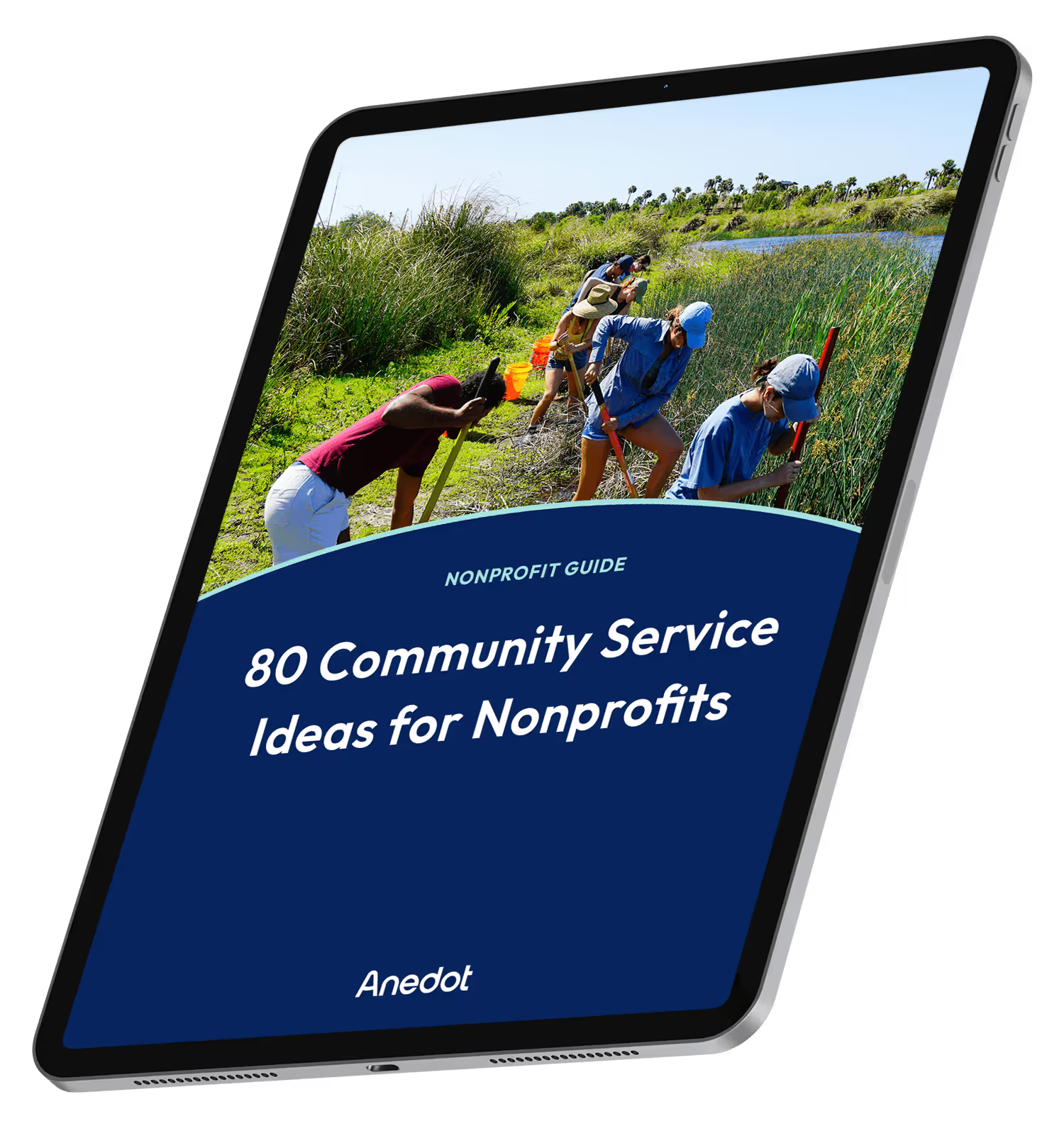
80 Community Service Ideas for Nonprofits

